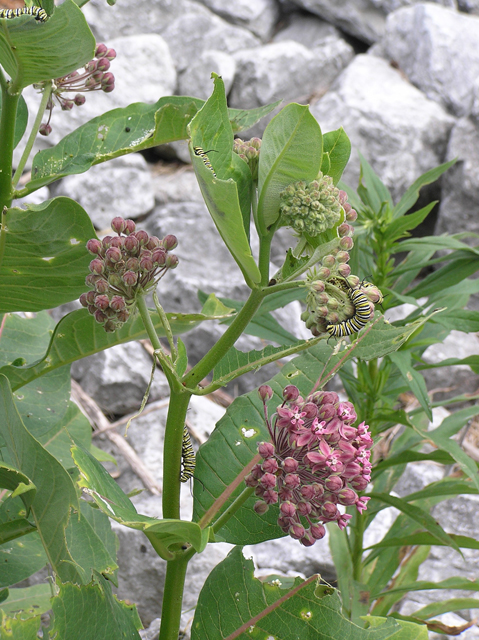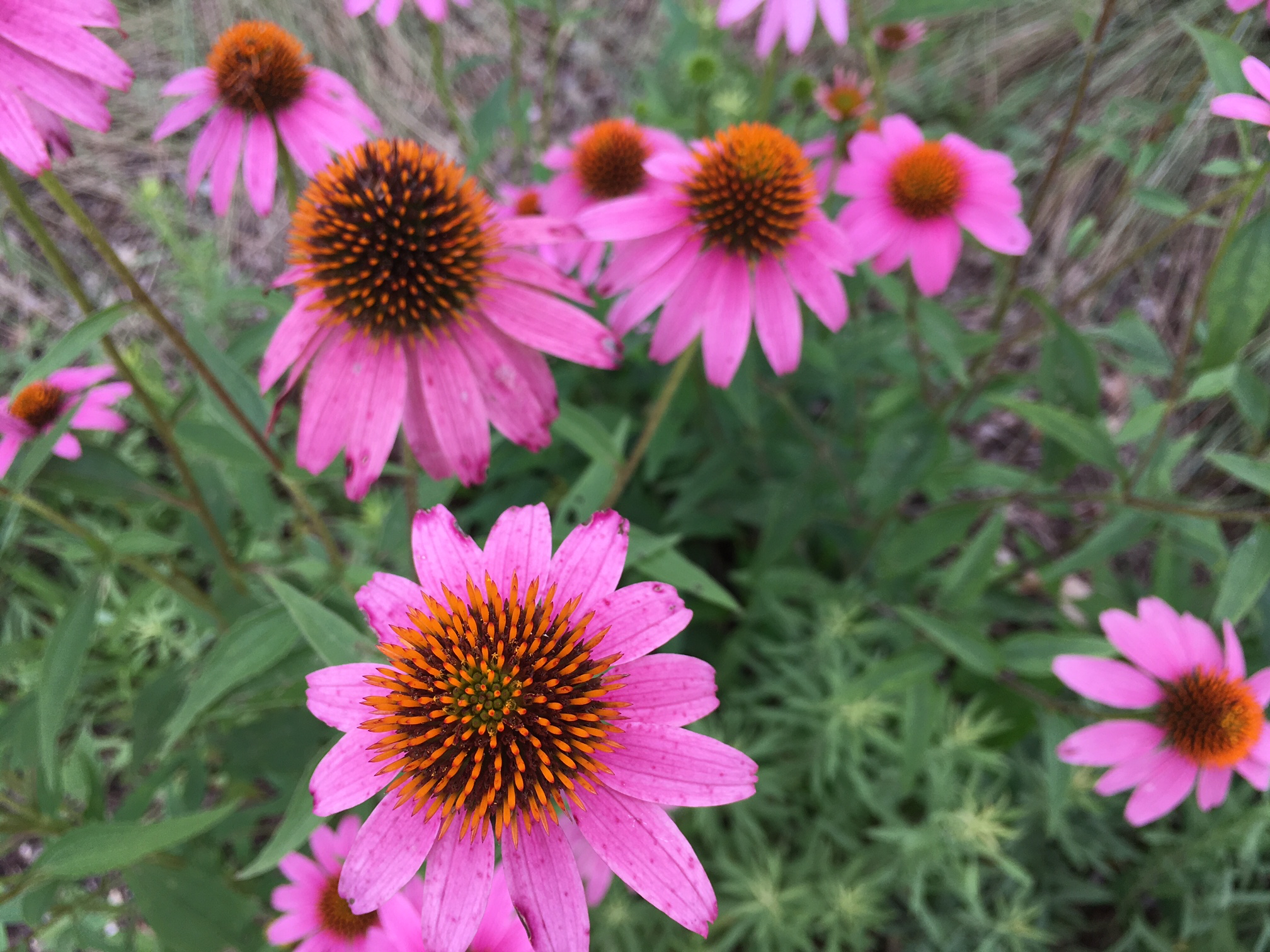A year after President Obama announced a National Pollinator Strategy with plans to create a pollinator corridor along Interstate Highway 35 (IH35), the Texas Department of Transportation (TxDOT) signed an agreement to work with five other states to make the “Monarch Highway” a reality.

Common milkweed, host plant to the Monarch butterfly, is one of two native milkweeds to be planted along the Monarch Highway in Texas by TxDOT. Photo by Mark Hixson via Ladybird Johnson Wildflower Center
On May 26, Texas joined Minnesota, Iowa, Missouri, Kansas and Oklahoma in signing a Memorandum of Understanding initiated by the Federal Highway Administration. The agreement encourages collaboration among the states to establish best practices and promote public awareness of the Monarch butterfly and other pollinators, and commits the states to plant native milkweeds and nectar plants along IH35, the primary flight path for the migrating insects. A Monarch Highway logo and signage are also in development.
“The I-35 Hill County rest areas are going to be planted with pollinator gardens in the next two months,” said Mark Cross, a spokesman for TxDOT.

TxDOT has planned four pollinator gardens at rest stops along the Monarch Highway, aka IH35. Graphic by Texas Butterfly Ranch
Cross added that the agency is contracting with Texas A&M University to develop short videos that will run at all four rest areas along the I-35 corridor–in Hill County at Mile Marker 362A, La Salle County at Mile Marker 59, Medina County at Mile Marker 130, and in Bell County at Mile Marker 281. The agency is also working with the Native Plant Society of Texas, Texas Master Gardeners and the Gulf Coast Prairie Association.
Literature and handouts promoting pollinators will be created for distribution at all TxDOT rest areas and travel centers, and the agency will convert “several acres” at each designated rest area into pollinator habitat, said Cross, adding, “This will change the landscape from a highly maintained area to a pollinator area.”
Fifteen species of wildflowers comprise the seed mix that TxDOT is planning, said Cross, including Butterfly weed, Asclepias tuberosa, and Common milkweed, Aslcepias syriaca.
Here’s the plant list: Black-eyed Susan, Bluebonnet, Butterfly Weed, Common Milkweed, Crimson Clover, Indian Blanket, Lance-Leafed Coreopsis, Mexican Hat, Missouri Primrose, Prairie Verbena, Purple Coneflower, Annual Phlox, Pink Evening Primrose, Plains Coreopsis, and Purple Horsemint.

Purple coneflower, an excellent nectar plant, will be part of the seed mix for the Monarch Highway rest stops. Photo by Monika Maeckle
TxDOT also is working with South Texas Natives, a project of the Caesar Kleberg Wildlife Research Institute at Texas A&M University-Kingsville, to promote and make available appropriate native seed mixes for Texas.
From its start in Gainesville, Texas at the Red River to its finish in Laredo on the Rio Grande, IH35 in Texas brags almost 590 miles–more than any other state. The Lone Star State also serves as the “Texas Funnel” for the Monarch butterfly migration, since all migrating Monarchs must pass through Texas as they move north in the spring and south in the fall, to and from their ancestral roosting sites in Michoacán, Mexico.
In the spring, the butterflies seek their host plant, milkweed, on which to lay their eggs; in the fall, they fuel up on late season nectar plants to power their flight to Mexico, which can exceed 2,500 miles.
Local Native Plant Society of Texas President Joan Miller applauded the news and said that planting of the sites will be incorporated as a service project at NPSOT’s annual symposium in Glen Rose the week of October 14. “The educational value of the installations are extremely important to understanding the use of native plants in landscaping whether it is on public or private property,” said Miller.
As cast in a press release byTxDOT, the Monarch Highway will attract millions of Mexican and Canadian visitors to IH35 each year–but Texas drivers need not worry about more traffic snarls. “They won’t be traveling by road; these visitors will arrive by air as part of a fascinating and fragile migration that happens twice a year.”
Related posts:
- IH35 to become pollinator corridor
- New study: nectar plants more important than milkweed to Monarch migration
- How to plan a successful butterfly and pollinator garden
- Mostly native butterfly garden outperforms lawn every time
- A year in the life of an urban butterfly garden
- Downtown River walk plot converts to pollinator garden, creature haven
- Converting your Lawn to a Butterfly Garden
- San Antonio becomes first National Wildlife Federation Monarch Champion city
- Late season Monarchs create gardening quandary
- What to do with late season Monarchs
- Tropical Milkweed: To Plant it or Not is No Simple Question
- How to raise Eastern Swallowtails
- How to raise Monarch butterflies at home
Like what you’re reading? Don’t miss a single post from the Texas Butterfly Ranch. Sign up for email delivery, like us on Facebook, or follow us on Twitter, @monikam.

(Negative comment) Planners and administrators do what is easiest for themselves, not what is best for monarchs!!! Now monarchs will be wiped out by 18-wheelers and other vehicles as the monarchs attempt to land at their “rest stops”.
I can just see the splattered windshields now! Butterfly guts everywhere! Also, now people and children will try to catch the butterflies or pick up the larva and/pupa .
These “monarch rest stops” should be established along the LEAST TRAVELED county roads and ranch roads where the monarchs will have the BEST SURVIVAL CHANCES while migrating!
It SURE BEATS what is happening now! Lot’s of MOWED grass along all out interstates and highways. NO benefit for anything!
Valid point, something to be recommended to those in charge.
I know with bees, the research shows that they actually do well avoiding fast moving traffic along interstates. The slow moving suburban speeds for some reason has much more bee kills.
Here in San Diego area, we have been cautioned to disinfect our temp cages from a moth of such that attacks the eggs as soon as they are laid. We are asked to put the eggs immediately into the temp cages for the worm and the pupa to develop and hatch. Then release on a warm day. I have been released such for two years now.
Monarchs do not favor Asclepias tuberosa for egg laying and Common milkweed, Aslcepias syriaca, will not thrive along roadsides in Texas because it doesn’t grow in the wild south of southern Kansas. The correct milkweeds to plant along I-35 in Texas are the ones that presently grow there; i.e. Asclepias viridis, asperula and oenotheroides.
Great comments, Paul. Common Milkweed has been found in only one county in Texas, Randall County in the Texas Panhandle. It was last seen in 1918, not quite a century ago, at an altitude of 2000 feet. It was reported to/by BONAP in 1958 I believe. The report is in French. I had a friend translate it for me.
Good comment, Paul. I was wondering as well when I read the post about the milkweeds in the mix. I suspect it may have a lot to do with what they can get commercially. Perhaps they can get their partners to hand plant some of the more difficult to find species. However, in the broader sense, the additional acreage of wildscape can have only a small impact. It’s the public education and encouragement for private landowners to commit to pollinator/nectar habitat that will make the real difference.
Thanks for pointing this out the issue with Common Milkweed. Just looking through the Asclepias found in each of the counties, there isn’t one common to all four of the counties. Bell County has Antelopehorn and Zizotes, Medina and Lasalle Counties have Zizotes, Hill County reportedly has A. tuberosa and A. viridiflora. The three species you mention: Asclepias asperula, Asclepias oenotheroides, and Asclepias viridis are more appropriate depending on ecoregion/soil types.
Is there a plant call honey vine that is a host plant for the monarch butterflies ?
Yep and the monarchs love it https://en.wikipedia.org/wiki/Cynanchum_laeve
Where can I buy either plants or seeds. I live on the west coast of central florida.
Is Honey Vine a native? It must not be one for the east coast.
I will only hope for the best. This type of intervention, to change the old mind set of the manicured green roadways, has not been done before to help Monarch Butterflies and other pollinators. So, until we see the results, it is an experiment. I hope that the rural areas also experiment with native milkweed to welcome the Monarchs in the spring as well as with early and late blooming plants to provide needed nectar for their migration.
In Ohio about the time the milkweed is at its prime the state has it mowed down, destroying the eggs and larva. There has been a sharp decrease in ALL butterflies. When we would go out to our Butterfly garden they would literally bump into you there were so many. That doesn’t happen any more.
How do you get rid of the Swamp Milkweed beetles? They’ve done a number on our milkweed plants! Have been pulling them off when seen.
I would love to get something like this started here in Virginia. Any idea where one would begin?
The Interstate 35 goes the same route as the monarch butterfly migration, but there are lots of other butterflies on the east coast. I can’t explain that because I live in the Southwest United States. LOL, Meg. This is Jacob Avenell speaking.
P.S. I live in Texas, and the Monarch Butterfly is the state butterfly here.
I love you a lot.
[…] I wondered if this plan is becoming a reality, and found some heartening information from the Texas Butterfly Ranch. Yes! People are actually out planting on the corridor and thoughtfully working together across […]